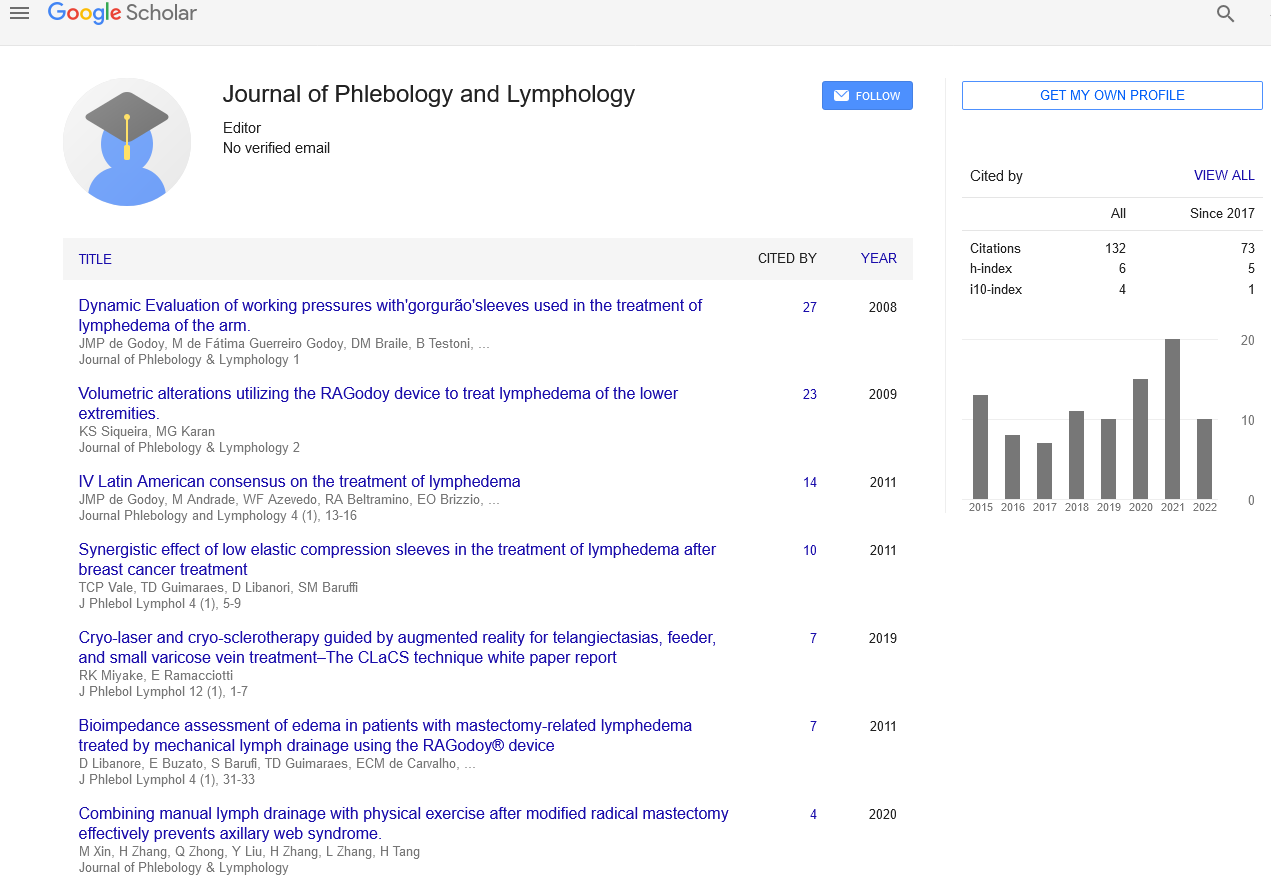Advance study of lymphatic system
Received: 14-Nov-2023 Accepted Date: Dec 21, 2023; Published: 27-Dec-2023
This open-access article is distributed under the terms of the Creative Commons Attribution Non-Commercial License (CC BY-NC) (http://creativecommons.org/licenses/by-nc/4.0/), which permits reuse, distribution and reproduction of the article, provided that the original work is properly cited and the reuse is restricted to noncommercial purposes. For commercial reuse, contact reprints@pulsus.com
Introduction
The lymphatic framework, or lymphoid framework, is an organ framework in vertebrates that is important for the circulatory framework and the invulnerable framework. It is comprised of a huge organization of lymph, lymphatic vessels, lymph hubs, lymphatic or lymphoid organs, and lymphoid tissues. The vessels convey a reasonable liquid called lymph (the Latin word lympha alludes to the divinity of new water, "Lympha") towards the heart [1, 2].
In contrast to the cardiovascular framework, the lymphatic framework is definitely not a shut framework. The human circulatory framework measures a normal of liters of blood each day through slim filtration, which eliminates plasma from the blood. Generally liters of the sifted plasma is reabsorbed straightforwardly into the veins, while the excess three liters are left in the interstitial liquid. One of the primary elements of the lymphatic framework is to give an embellishment return course to the blood for the excess three liters [2].
The other fundamental capacity is that of invulnerable protection. Lymph is basically the same as blood plasma, in that it contains byproducts and cell flotsam and jetsam, along with microbes and proteins. The cells of the lymph are for the most part lymphocytes. Related lymphoid organs are made out of lymphoid tissue, and are the destinations either of lymphocyte creation or of lymphocyte actuation. These incorporate the lymph hubs (where the most noteworthy lymphocyte focus is discovered), the spleen, the thymus, and the tonsils. Lymphocytes are at first created in the bone marrow. The lymphoid organs additionally contain different sorts of cells, for example, stromal cells for help. Lymphoid tissue is likewise connected with mucosas, for example, mucosa-related lymphoid tissue (MALT) [3,4].
Liquid from circling blood spills into the tissues of the body by slender activity, conveying supplements to the cells. The liquid washes the tissues as interstitial liquid, gathering side-effects, microscopic organisms, and harmed cells, and afterward depletes as lymph into the lymphatic vessels and lymphatic vessels. These vessels convey the lymph all through the body, going through various lymph hubs which channel out undesirable materials like microorganisms and harmed cells. Lymph then, at that point passes into a lot bigger lymph vessels known as lymph pipes. The right lymphatic conduit depletes the right half of the area and the a lot bigger left lymphatic pipe, known as the thoracic pipe, depletes the left half of the body. The channels void into the subclavian veins to get back to the blood flow. Lymph is traveled through the framework by muscle withdrawals. In certain vertebrates, a lymph heart is available that siphons the lymph to the veins [1].
The lymphatic framework was first depicted in the century autonomously by Rudbeck and Bartholin. It would it be advisable for patient to call their primary care physician about an issue with their lymphatic framework to witness the event that you experience weariness (outrageous sleepiness) or have unexplained enlarging that keeps going in excess of half a month or meddles with your everyday exercises. To check whether your lymphatic framework is functioning as it ought to, your primary care physician might utilize imaging tests, for example, a CT output or MRI. These tests permit your PCP to see blockages in your lymphatic framework [3,4].
Conclusion
The primary lymph sacs to seem are the combined jugular lymph sacs at the intersection of the inner throat and subclavian veins. From the jugular lymph sacs, lymphatic fine plexuses spread to the chest, upper appendages, neck, and head. Some of the plexuses broaden and structure lymphatic vessels in their individual locales. Every jugular lymph sac holds something like one association with its jugular vein, the left one forming into the prevalent part of the thoracic conduit. To keep your lymphatic framework solid and sound, you ought to: Keep away from openness to poisonous synthetics like those in pesticides or cleaning items. These synthetic compounds can develop in your framework and make it harder for your body to channel squander. Drink a lot of water to remain hydrated so lymph can without much of a stretch move all through your body. Keep a sound way of life that incorporates ordinary exercise and a solid eating regimen.
REFERENCES
- Taenzer V. Lymph node changes in lymphography. Minerva Chir. 1977;32(15-16):1007-9.
- Natale G, Bocci G, Ribatti D, et al. Scholars and scientists in the history of the lymphatic system. J Anat. 2017;231(3):417–29.
- Shekhar K, Amey N. Retrograde transvenous selective lymphatic duct embolization in post donor nephrectomy chylous ascites. CEN Case Rep. 2021;21(5):618-6.
- Jeltsch M, Tammela T, Alitalo K, et al. Genesis and pathogenesis of lymphatic vessels. Cell Tissue Res. 2003;14(1):69–84.





